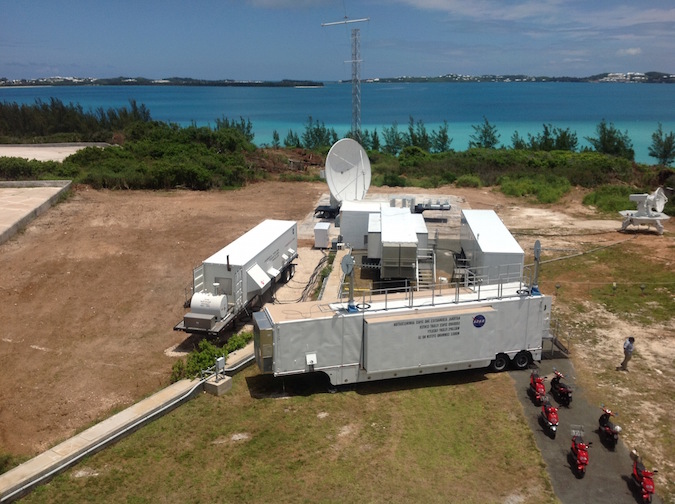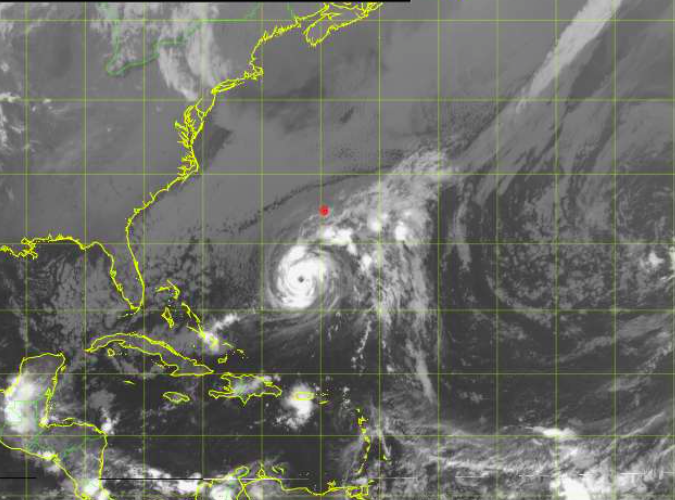======================================================================================
Date Vehicle ID Payload Mass Site* Orbit Orbit
kg (kmxkmxdeg) Type**
----------------------------------------------------------------------------------------
08/21/02 Atlas 5-401 AV001 Hot Bird 6 3905 CC41 315x45863x17.82 GTO+
05/13/03 Atlas 5-401 AV002 HellaSat 2 3440 CC41 312x85457x17 GTO+
07/17/03 Atlas 5-521 AV003 Rainbow 1 4328 CC41 3790x35845x17.5 GTO+
12/17/04 Atlas 5-521 AV005 AMC-16 4200 CC41 4761x34611x27.2 GTO
03/11/05 Atlas 5-431 AV004 Inmarsat 4F1 (4A) 5945 CC41 440x90500x21 GTO+
08/12/05 Atlas 5-401 AV007 MRO Mars Orbiter 2180 CC41 HCO
01/19/06 Atlas 5-551 AV010 Pluto New Horizons 478 CC41 HCO
04/20/06 Atlas 5-411 AV008 Astra 1KR 4332 CC41 6212x37786x23.97 GTO+
03/09/07 Atlas 5-401 AV013 STP-1 (OES+) 1400 CC41 560x560x35.4 LEO
06/15/07 Atlas 5-401 AV009 NROL-30R CC41 [842x1186x63.35] [LEO](2)
10/11/07 Atlas 5-421 AV011 WGS-SV1 5770 CC41 477x66847x20.1 GTO+
12/10/07 Atlas 5-401 AV015 NROL-24 (SDS?) CC41 261x16776x60 EEO/M
03/13/08 Atlas 5-411 AV006 NRO L-28 VA3E 1200x39000x63 EEO/M
04/14/08 Atlas 5-421 AV014 ICO G1 6630 CC41 187x35925x22.7 GTO
04/04/09 Atlas 5-421 AV016 WGS F2 5987 CC41 408x66811x20.93 GTO+
06/18/09 Atlas 5-401 AV020 LRO/LCROSS 2810 CC41 194x353700x28 HTO
09/08/09 Atlas 5-401 AV018 PAN 3000? CC41 GTO+?
10/18/09 Atlas 5-401 AV017 DMSP-18 1200 VA3E 857kmx99deg LEO/S
11/23/09 Atlas 5-431 AV024 Intelsat 14 5614 CC41 6037x36823x22.48 GTO+
02/11/10 Atlas 5-401 AV021 SDO 3100 CC41 2498x35318x28.52 GTO
04/22/10 Atlas 5-501 AV012 X-37B OTV-1 4989 CC41 400x400x40 LEO
08/14/10 Atlas 5-531 AV019 AEHF-1 6170 CC41 222x50245x22.2 GTO+
09/21/10 Atlas 5-501 AV025 NROL-41 VA3E 1100x1100x123 LEO/R
03/05/11 Atlas 5-501 AV026 X-37 OTV-2 ~5300 CC41 LEO
04/15/11 Atlas 5-401 AV027 NROL-34 ~6000? VA3E 1,000x1,000x63.4 LEO
05/07/11 Atlas 5-401 AV022 SBIRS-GEO 1 4833 CC41 185x35786x21.64 GTO
08/05/11 Atlas 5-551 AV029 Juno 3625 CC41 HCO
11/26/11 Atlas 5-541 AV028 MSL 3839 CC41 HCO
02/24/12 Atlas 5-551 AV030 MUOS 1 6740 CC41 3461x35786x19 GTO
05/04/12 Atlas 5-531 AV031 AEHF-2 6170 CC41 222x50244x20.7 GTO+
06/20/12 Atlas 5-401 AV023 NROL-38 CC41 GTO?
08/32/12 Atlas 5-401 AV032 RBSP A/B 1316 CC41 601x30709x10 EEO
09/13/12 Atlas 5-401 AV033 NROL-36 ~6000 VA3E 1000x1000x63.4? LEO?
12/11/12 Atlas 5-501 AV034 OTV-3(X37B-1F2) ~5000 CC41 343x360x43.5 LEO
01/31/13 Atlas 5-401 AV036 TDRS-K 3454 CC41 4313x35789x25.9 GTO+
02/11/13 Atlas 5-401 AV035 LDCM 2770 VA3E 661x676x98.2 LEO/S
03/19/13 Atlas 5-401 AV037 SBIRS GEO2 ~4500 CC41 185x35786x22.19 GTO
05/15/13 Atlas 5-401 AV039 GPS 2F-4 1540 CC41 20200x55 MEO
07/19/13 Atlas 5-551 AV040 MUOS 2 6740 CC41 3802x35787x19.1 GTO
09/18/13 Atlas 5-531 AV041 AEHF 3 6169 CC41 225x50000x20.9 GTO
11/18/13 Atlas 5-401 AV038 MAVEN 2540 CC41 HCO
12/06/13 Atlas 5-501 AV042 NROL 39 VA3E 1100x1100x123 LEO/R
01/24/14 Atlas 5-401 AV043 TDRS-L 3454 CC41 4839x35788x25.5 GTO+
04/03/14 Atlas 5-401 AV044 DMSP F19 1200 VA3E 853x853x98.87 LEO/S
04/10/14 Atlas 5-541 AV045 NROL-67 CC41 GEO?
05/22/14 Atlas 5-401 AV046 NROL-33 CC41 GTO?
08/02/14 Atlas 5-401 AV048 GPS 2F7 1630 CC41 20200x55 MEO
08/13/14 Atlas 5-401 AV047 Worldview 3 2812 VA3E 607x629x97.97 LEO/S
09/17/14 Atlas 5-401 AV049 CLIO CC41 GTO+
10/29/14 Atlas 5-401 AV050 GPS 2F-8 1630 CC41 20200x55 MEO
12/13/14 Atlas 5-541 AV051 NROL 35 VA3E 2101x37748x62.85 EEO/M(3)
01/21/15 Atlas 5-551 AV052 MUOS 3 6740 CC41 3817x35787x19.11 GTO
03/13/15 Atlas 5-421 AV053 MMS 5440 CC41 580x70279x28.78 EEO
05/20/15 Atlas 5-501 AV054 AFSPC 5 (X37B OTV4?) 5000+ CC41 LEO
07/15/15 Atlas 5-401 AV055 GPS 2F-10 1630 CC41 20200x55 MEO
09/02/15 Atlas 5-551 AV056 MUOS 4 6740 CC41 3819x35786x19.11 GTO+
10/02/15 Atlas 5-412 AV059 Morelos 3 5300 CC41 4797x35788x26.99 GTO
10/08/15 Atlas 5-401 AV058 NROL 55 (NOSS 3-7) VA3E 1013x1200x63.43 LEO
10/31/15 Atlas 5-401 AV060 GPS 2F-11 1630 CC41 20426x20486x55 MEO
12/06/15 Atlas 5-401 AV061 Cygnus/OA-4 7492 CC41 230x51.6 LEO/ISS
02/05/16 Atlas 5-401 AV057 GPS 2F-12 1630 CC41 20426x20486x55 MEO
03/23/16 Atlas 5-401 AV064 Cygnus OA-6 ~7495 CC41 230x51.6 LEO/ISS[4]
----------------------------------------------------------------------------------------
(2)Centaur shut down about four seconds early during its second burn,
leaving the twin NOSS payloads in an unannounced low transfer orbit.
Two weeks after the launch, U.S. Air Force officials reported that
liquid hydrogen had leaked through a valve that failed to close
properly during the coast phase, leading to a propellant shortage
during the second burn. Amateur observers tracked the payloads,
in 842 x 1186 km x 63.35 deg orbits, lower than the expected
1,000 x 1,200 km x 63.4 deg. The satellites reportedly would be
able to move themselves to operational orbits despite the shortfall.
(3) First RL10C-1 engine flight.
[4] Atlas booster shut down ~5-6 sec early. Centaur burned more than one minute
longer than planned to reach orbit. Deorbit missed target.
*Site Code:
CC = Cape Canaveral, FL, USA
CC37B = Space Launch Complex 37B: Delta 4
CC41 = Space Launch Complex 41: Atlas 5
VA = Vandenberg AFB, CA, USA
VA3E = Space Launch Complex 3E: Atlas 5
VA6 = Space Launch Complex 6: Delta 4
**Orbit Code:



